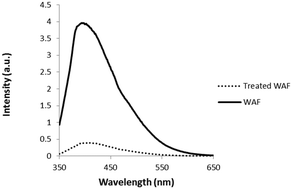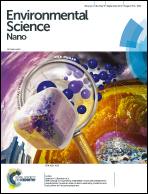Use of PVP-coated magnetite nanoparticles to ameliorate oil toxicity to an estuarine meiobenthic copepod and stimulate the growth of oil-degrading bacteria
Abstract
Crude oil and its water-accommodated fractions (WAF) have the potential to cause catastrophic damage to aquatic ecosystems when released. A new nanomaterial (NM), composed of polyvinylpyrrolidone-coated iron oxide, has been successfully used to remediate oil-contaminated waters. In this study, the toxicity of these NMs, crude oil WAF, and their mixtures was evaluated using an acute toxicity assay based on the estuarine copepod Amphiascus tenuiremis. Results showed that the NMs had no significant effect on copepod survival up to concentrations of 25 mg L−1 over 4 days. For comparison, optimal oil removal from the aqueous phase was shown to be at 18 mg L−1 over 1 hour. WAF was highly-toxic to copepods (mortality 95 ± 5%). Mixing and magnetic removal of NMs within 1 hour of exposure to WAF resulted in a >90% reduction in toxicity compared to the control sample that contained WAF with no NMs. Addition of NMs to WAF at times up to 72 hours without magnetic separation also resulted in significantly reduced toxicity, suggesting that the physical form of the oil : NM mixture influenced toxicity. The addition of oil degrading-bacteria to WAF treated with NMs resulted in significant stimulation of bacterial growth relative to WAF without NMs, likely because of the input of additional available Fe and C sources. These initial data suggest that under realistic environmental conditions, these NMs could be added rapidly to oil spills in marine systems to reduce acute oil toxicity and increase oil degradation.



 Please wait while we load your content...
Please wait while we load your content...